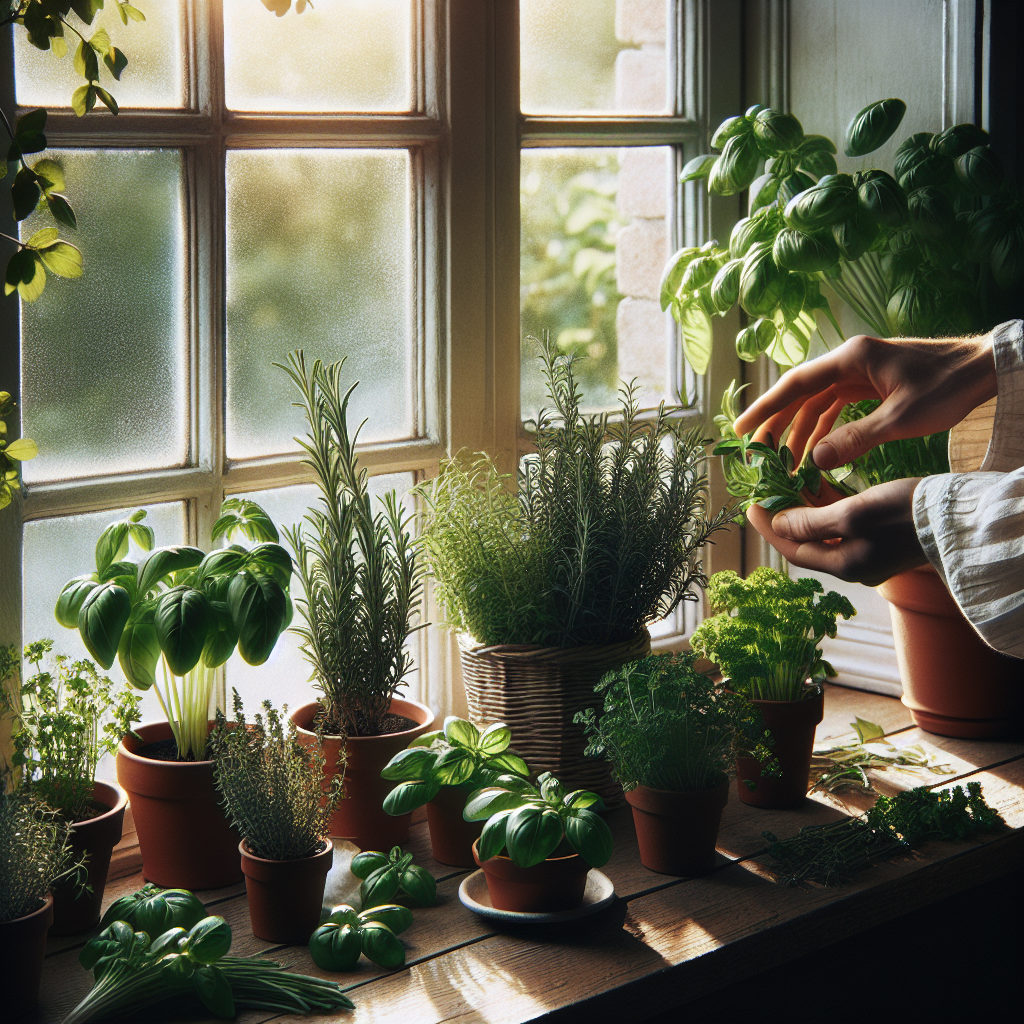Herb Garden Window: Fresh Flavors at Your Fingertips
Are you tired of buying expensive herbs from the grocery store, only to have them wilt and go bad before you can use them all? Why not create your own herb garden window and have fresh flavors at your fingertips all year round? In this article, we will guide you through the step-by-step process of creating your own herb garden window, from choosing the right herbs to maintaining your garden. Let’s get started!
Step 1: Choosing the Right Location
The first step in creating your herb garden window is to choose the right location. Ideally, you want a window that receives at least 6 hours of sunlight each day. South-facing windows are usually the best choice, as they receive the most sunlight throughout the day. However, east or west-facing windows can also work if they receive enough sunlight.
Once you have chosen the right location, measure the width and height of your window. This will help you determine the size of your herb garden and the number of pots you will need.
Step 2: Selecting the Right Herbs
Now that you have chosen the location for your herb garden window, it’s time to select the right herbs. Consider the flavors you enjoy the most and the herbs you use frequently in your cooking. Some popular choices for herb garden windows include:
These herbs are relatively easy to grow and can thrive in a window garden. However, feel free to experiment with other herbs that you enjoy.
Step 3: Gathering the Materials
Before you start planting your herb garden window, gather all the necessary materials. Here’s a list of what you’ll need:
- Pots or containers for each herb
- High-quality potting soil
- Herb seeds or seedlings
- A watering can or spray bottle
- A small trowel or spoon for planting
Make sure to choose pots or containers that have drainage holes at the bottom to prevent waterlogging.
Step 4: Planting Your Herbs
Now it’s time to plant your herbs! Follow these steps:
- Fill each pot or container with potting soil, leaving about an inch of space at the top.
- Make a small hole in the soil using your trowel or spoon.
- Place the herb seedling or seeds into the hole and cover it with soil.
- Water each pot thoroughly, making sure the soil is evenly moist.
Remember to label each pot with the name of the herb to avoid confusion later on.
Step 5: Maintaining Your Herb Garden
Once your herb garden window is planted, it’s important to provide the right care and maintenance to ensure healthy growth. Here are some tips:
- Watering: Herbs generally prefer slightly moist soil, so water them when the top inch of soil feels dry. Avoid overwatering, as it can lead to root rot.
- Light: Make sure your herbs receive enough sunlight each day. If your window doesn’t provide sufficient light, consider using a grow light to supplement.
- Pruning: Regularly prune your herbs to encourage bushier growth and prevent them from becoming leggy. Use sharp scissors or pruning shears to trim the stems just above a leaf node.
- Fertilizing: Herbs don’t require heavy fertilization, but you can use a balanced organic fertilizer once a month to provide essential nutrients.
By following these maintenance tips, you can enjoy a thriving herb garden window all year round.
Summary
Creating a herb garden window is a rewarding and practical DIY project that allows you to have fresh flavors at your fingertips. By choosing the right location, selecting the right herbs, gathering the necessary materials, planting your herbs correctly, and providing proper maintenance, you can enjoy a bountiful herb garden in your own home. So why wait? Start your herb garden window today and elevate your culinary creations with the freshest flavors!
Basil

Basil is a versatile herb that adds a fresh and aromatic flavor to many dishes. It pairs well with tomatoes, mozzarella, and is a key ingredient in pesto sauce. Plant basil in a sunny spot and keep the soil evenly moist. Pinch off the flowers to encourage leaf growth.
Rosemary

Rosemary is a fragrant herb that is commonly used in Mediterranean cuisine. It has needle-like leaves and a woody stem. Plant rosemary in well-draining soil and water it sparingly. It thrives in sunny locations and can be used to flavor roasted meats, potatoes, and bread.
Thyme

Thyme is a small, bushy herb with tiny leaves that add a subtle earthy flavor to dishes. It pairs well with roasted vegetables, poultry, and soups. Plant thyme in well-draining soil and water it when the top inch of soil feels dry. It prefers full sun but can tolerate partial shade.
Parsley

Parsley is a versatile herb that is commonly used as a garnish but can also add flavor to various dishes. It has flat or curly leaves and a fresh, slightly peppery taste. Plant parsley in well-draining soil and keep it evenly moist. It can tolerate partial shade but prefers full sun.






